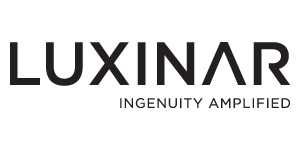Laser sources from Luxinar are widely used in the automotive industry to process materials like reinforced plastics, textiles, glass, and rubber. Common applications include cutting and trimming plastic automotive parts, such as dashboards, trims, and light housings, as well as surface texturing and paint removal. Luxinar’s SR series or SCX 35 sealed CO2 lasers are often robot-mounted for precise 3D processing, enabling multiple laser operations in one robotic cell to enhance efficiency.
Luxinar’s lasers also cut automotive textiles, including seat cloth, fabric-covered interiors, seatbelt webbing, airbag fabric, and leather or carpet for seats and trims. For rubber components, such as door seals and wiper blades, small drainage holes are drilled using the MULTISCAN® CO2 laser system, which can also mark automotive parts like plastic components, wipers, and windows with critical information.
CUTTING AND DRILLING CARBON FIBRE COMPOSITES
Machining of carbon fibre composites for the automotive and aerospace industries evaporates the epoxy resin that binds the composite together and can result in de-lamination and matrix damage, tool wear and breakage. Conventional lasers create a heat-affected zone around the cut, exposing the fibres and compromising the strength of the material.
With a Luxinar LXR® series ultrashort pulse laser heat diffusion is greatly reduced so cutting can be accomplished, and the epoxy resin remains intact. This means that holes can be drilled, and features cut out without compromising the strength of the carbon fibre sheet.
GLASS CUTTING FOR THE AUTOMOTIVE INDUSTRY
Ultrashort pulse combined with CO2 lasers can cut thick glass. The ultrashort pulse laser scribes the glass, a process that needs high energy, and is delivered as a single pulse or as a fast, high-energy burst. The CO2 laser then supplies thermal energy to initiate cleaving along the scribed line. The glass is separated cleanly with little or no damage due to microcracking at the edge; curves, straight lines and closed contours can all be achieved using this process.
For more information visit Luxinar's BiOS booth #8378 and Photonics West booth #3378 or contact us at: https://www.luxinar.com/contact/
Show full description +

